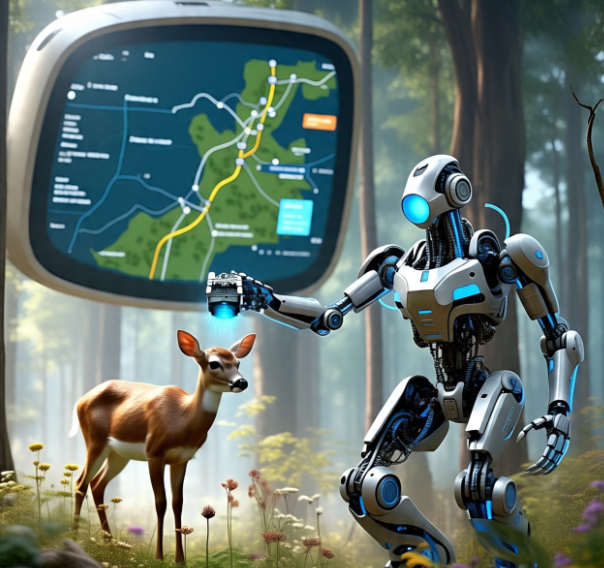How Artificial Intelligence Is Protecting Nature and Wildlife:
AI in Conservation In the year 2025, Artificial Intelligence (AI) becomes an critical new best friend within the combat to shop the planet’s wildlife. From preventing poaching to monitoring endangered species and reading environment health, AI is rapidly reworking the manner conservationists work—making efforts faster, smarter, and extra powerful than ever before.
1. Monitoring of Wildlife Using AI Conservationists
have long struggled with the assignment of monitoring animals in the wild. AI has now made this easier by using: Camera Traps and AI Algorithms: AI algorithms test lots of digital camera entice photographs, immediately figuring out species and alerting researchers to uncommon activity, saving masses of hours. Acoustic Monitoring: Audio devices powered through AI can pay attention specific birds, bats, or even chainsaws used for illegal logging in forests. Satellite Image Analysis: Machine getting to know tools experiment satellite facts to music habitat loss, deforestation, and illegal mining in real-time.
2. Stopping Poachers Before They Strike
Anti-poaching is one of the most huge packages of AI in conservation: Predictive Analytics: AI fashions use ancient statistics (climate, patrol styles, animal movements) to predict in which poachers are possibly to strike next.
Drones with Computer Vision: AI-enabled drones patrol national parks, spotting human beings, weapons, or suspicious conduct from above—mainly useful at night time.
Facial Recognition for Wildlife: Tools like Wildbook use pattern reputation to perceive person animals (like whale sharks or zebras), helping both conservation and anti-trafficking efforts.
3. AI and Biodiversity Research
AI allows scientists analyze large datasets from biodiversity surveys. For example: DNA Barcoding + AI: AI hurries up genetic identity of species, even in complicated samples like soil or water.
Climate Change Impact Modeling: Algorithms simulate how species distribution will alternate below unique weather scenarios—supporting form higher rules.
4. Bringing conservation to all elements of the arena
Thanks to cloud platforms and cell apps, even far flung and underfunded conservation organizations can now get entry to AI gear. AI is used by apps like iNaturalist to help ordinary people become aware of animals and flora, crowdsourcing valuable biodiversity data from round the arena.
Conclusion:
A Smarter Way to Save Nature
In conservation, AI isn’t always a replacement for humans, but it is a effective companion. AI permits conservationists to pay attention on what matters maximum: shielding Earth’s precious wildlife before it’s miles too overdue by means of automating routine obligations, recognizing invisible styles, and predicting threats.



One Comment